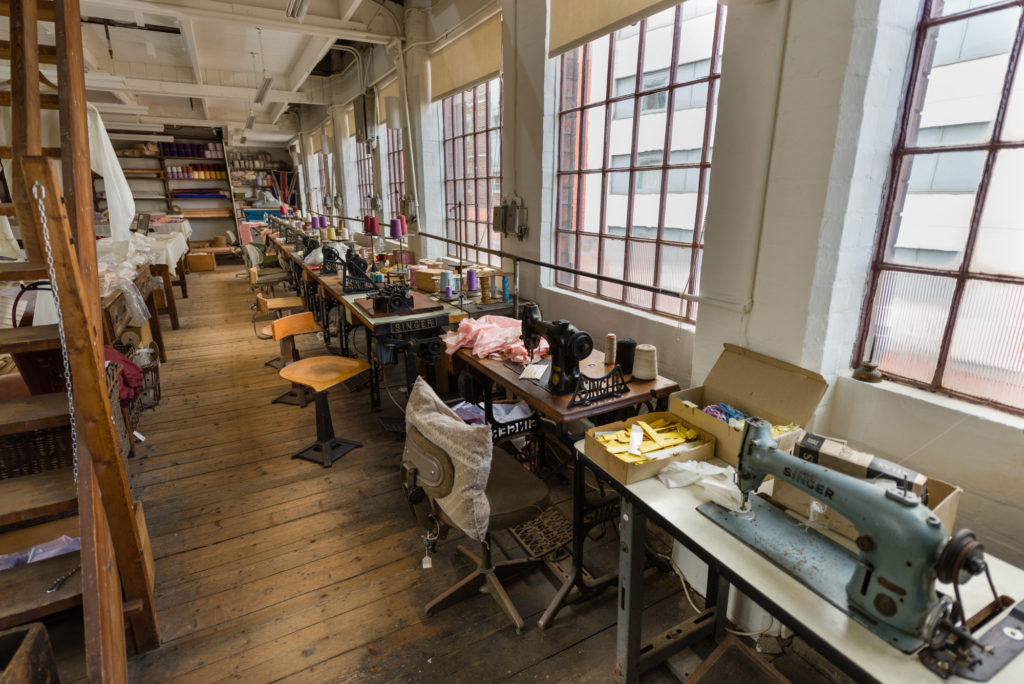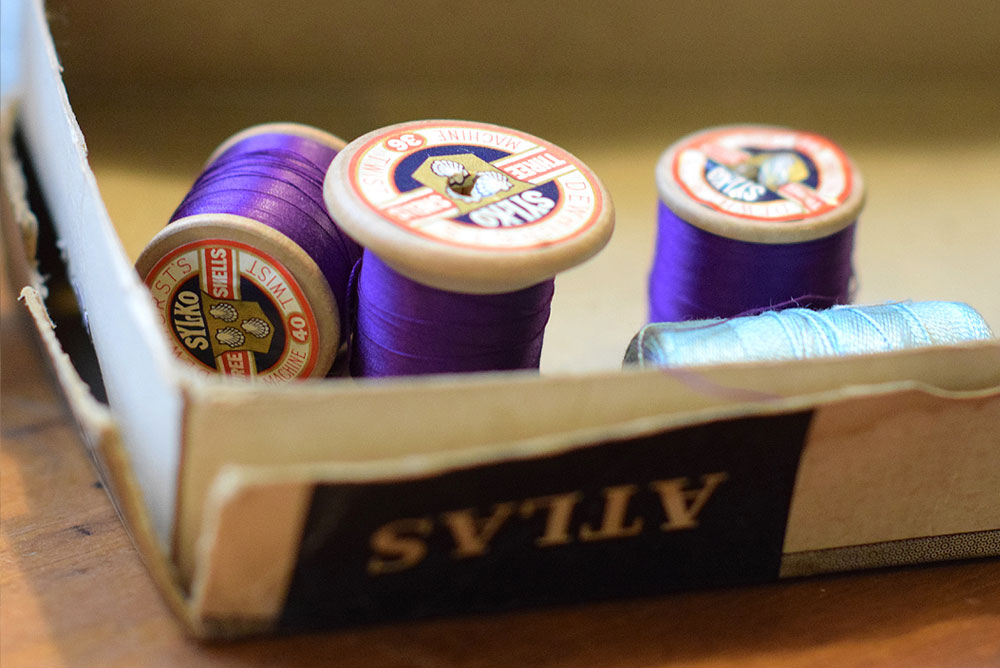

The Shroud Room was the most important workshop on the second floor and occupied the whole of the front range. This was where funerary robes that dressed the deceased were made, as well as pillows and linings for the coffin. This room was the domain of women, at least 15 ladies worked here, they referred to it as ‘the Sewing Room’.
The Shroud Room has a high ceiling and lots of large windows that run along the length of one wall. These windows provide light to the bench below where there was space for a row of nine sewing machines. The position of the workbench provided the seamstresses with plenty of natural light, although the lower window panes are made of either reeded or frosted glass so that the ladies couldn’t see through it and get distracted (many of the windows in the factory had a similar design). The sewing machines were Singers, Pfaffs, a Wilcox & Gibbs, and an ‘over locker’ (a sewing machine designed to join seams, stitching over the edges of cut fabric to prevent fraying).
On the Shroud Room shelves we find rolls of material. At first these would have been silks, cottons, satins, swansdown and lace. More recently the materials had become mostly synthetic. In the centre of the room we find tables used for cutting material and at one end of the room next to the hoist, there is a ‘crimping machine’. This piece of machinery was used to cut out scalloped edging in material and probably dates from the early decades of the 20th Century.
Elizabeth Weaving, who used to work in the Shroud Room, remembered how cold it used to get:
“In winter it was very cold in here, because of the old Victorian windows. In the summer, it was the reverse, because you’ve got all this glass, and it’s really hot. And I know sometimes it could be that cold that you could actually see frost gathering on the inside of the panes, and you’d sit with your jacket on, or run across to the fire, especially when we had our breaks. And stand like the Victorian gentleman!”
Sheila Maher began working in the Shroud Room at Newman Brothers in the late 1950s. In March 1960 Sheila was three months’ pregnant and needed to get married as quickly as possible, but couldn’t afford a wedding dress. Instead she came up with a plan to pinch shroud material and make her own wedding dress.
“I decided to come to work very early in the morning, because we could get in anyway, and I used to measure up the lace and the silk. And what I used to do is fold it up and put it round my belly, because being pregnant they didn’t know any different, but I used to be frightened to death in case it fell down when I stood up! When I first got married, things didn’t always go well, and we used to be fighting and arguing. One day I said to my husband, ‘no wonder I’ve had no luck, because when I married you, I got married in a shroud!”







